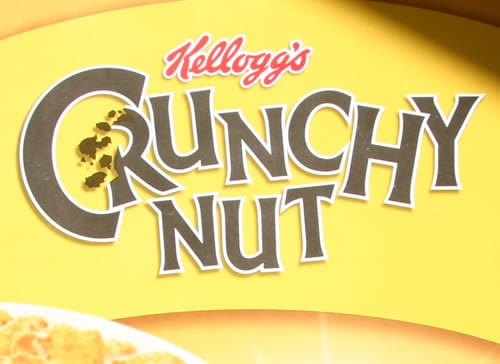Earlier this year Kelloggs launched a marketing campaign. Their plan? To reach an audience of single men between the ages of 18 and 35, who were mainly college students. How? By placing a QR code and SMS predominantly on the back of their new Crunchy Nut Cereal Packets.
By scanning the code the reader is taken to a video reinforcing the marketing message, outlined on the cereal box, that you can eat cereal anytime because “it’s morning somewhere.” At the time of writing this post the video showed morning in Papeete, Tahiti. There’s a cockerel sound followed by a short video of a beautiful beach at sunrise in Tahiti.
Visiting the site at different times of the day you would see morning in other parts of the world. Underneath the QR code Kelloggs provided instructions on how to download a reader to scan the code. If you don’t have a reader just follow this link to download one then point the reader at the image below.
But its a gimmick you say. What’s the point?
Let’s look at the results of the campaign.
40,000 QR scans and 6,000 texts to the mobile site, resulting in 38,000 videos played and 50,000 page views. “The primary strategy of this campaign was to create more engagement with the brand via mobile,” said David Apple who was involved in the promotion. I would say that was achieved, wouldn’t you?
What can we learn from Kellogg’s QR Code Campaign?
1. The importance of knowing your target market
A target market, defined by Wikipedia is “a group of customers that the business has decided to aim its marketing efforts and ultimately its merchandise” . Who are you targeting your marketing message to? Clarity of your target market is a major key to running an efficient and cost effective marketing campaign. Kelloggs knew who their target market was. They wanted to promote their new cereal to single men between the ages of 18 and 35 who were mostly college students.
2. Know how to communicate with your target market
Once you know who your target market is how are you going to reach them? How are you going to get your message out to them? At this stage it’s important to get to know your target market: their lifestyle, likes, dislikes, and where they can be found. What type of communication will reach your target market? Kelloggs decided on a QR code and SMS with a message boldly written on the back of their new cereal boxes. The use of the QR code would intrigue their target market, who were computer literate and enjoyed electronic games. The QR code would encourage interaction.
3. Understand what result you want from your marketing campaign.
Kelloggs wanted their target market to have more engagement with their brand and communicated their marketing message through an interactive, fun activity. With more engagement more sales would come in a segment of the market that Kelloggs wanted to expand. What result do you want from your marketing campaign?
4. Have a clear message
Keep your marketing message focused and to the point. You won’t convert prospects into customers if your marketing message is unclear. Provide too many details and your target market might not understand what you are trying to tell them. On the back of the Kellogg’s cereal packet the message is crystal clear “With the perfect blend of sweet and nutty in every crunchy bite crunchy nut is so delicious you won’t want to wait until morning to eat it. Luckily you don’t have to it’s morning somewhere.” Cereal is seen as a breakfast food but with the message that its morning somewhere at every moment of the day Kellogg’s delivers the message that you can eat the cereal at any time of day.
Kelloggs ran a clear, targeted, fun, and interactive marketing campaign that delivered results. What do you think?



